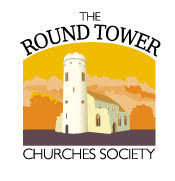An estimated four tonnes of flint and material has fallen from the tower of St Mary’s, Kirby Bedon.
The church, which is about 50 yards from St Andrew’s where Sunday service was taking place on February 9, 2020.
Peter de Bunsen, churchwarden, said that it had apparently fallen during the service. “We didn’t hear anything but realised when we came out of the church,” he said.
Ruth Blackman, who is the architect for St Andrew’s, said that material, probably from part of the belfry of the ruined tower had fallen. It was likely and was later confirmed by a surveyor’s visit that weeks of wet weather had weakened the mortar, thus leading to its collapse. While Storm Ceira and the high winds had obviously not helped, it was almost certainly a result of the prolonged rainfall. There was about one metre of material, which had fallen within the tower ruins, added Mrs Blackburn.
Mr de Bunsen said that St Mary thought likely to date from the mid 12th century, circa 1140. The round tower might be a later build, possibly in the 14th century. Post Reformation after Langley Abbey’s demise, the church went into decline and by 1700 was a ruin. St Andrew, however enjoyed a revival in its fortunes and was restored in the 1880s.
A drawing of St Mary’s in 1814 showed that it had been ruinous for some time – the tower and nave were still standing but covered in ivy.
In Bill Goode’s 1994 Book, Round Tower Churches, he noted that the tower was uncoursed and of whole flints. It was about 45ft high. He took the photograph of the ruins in 1985.
